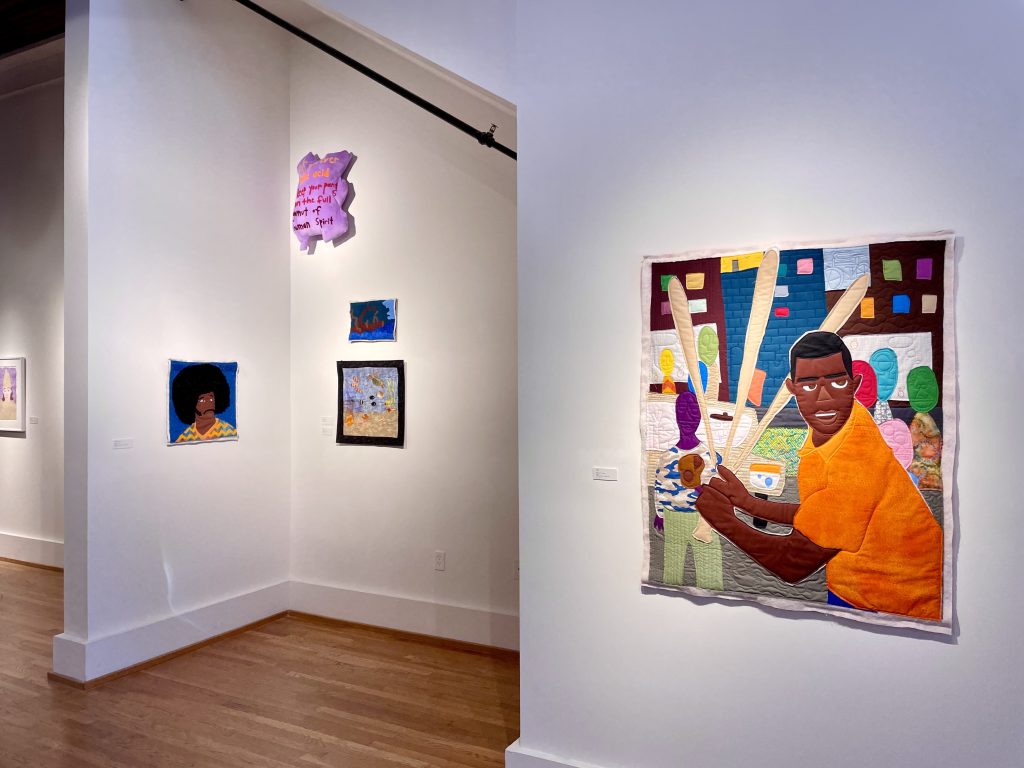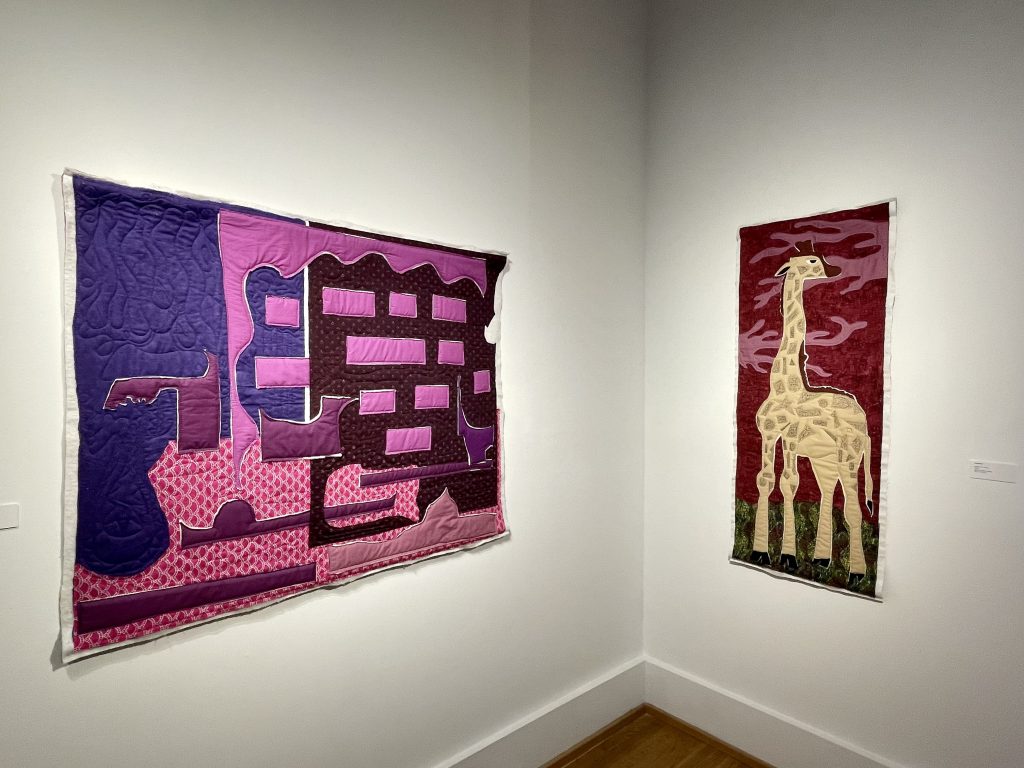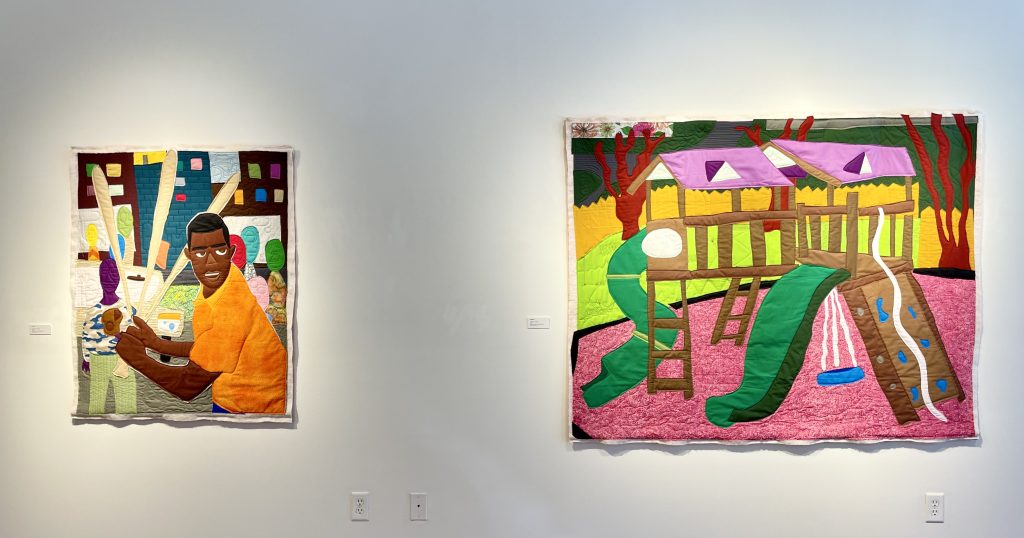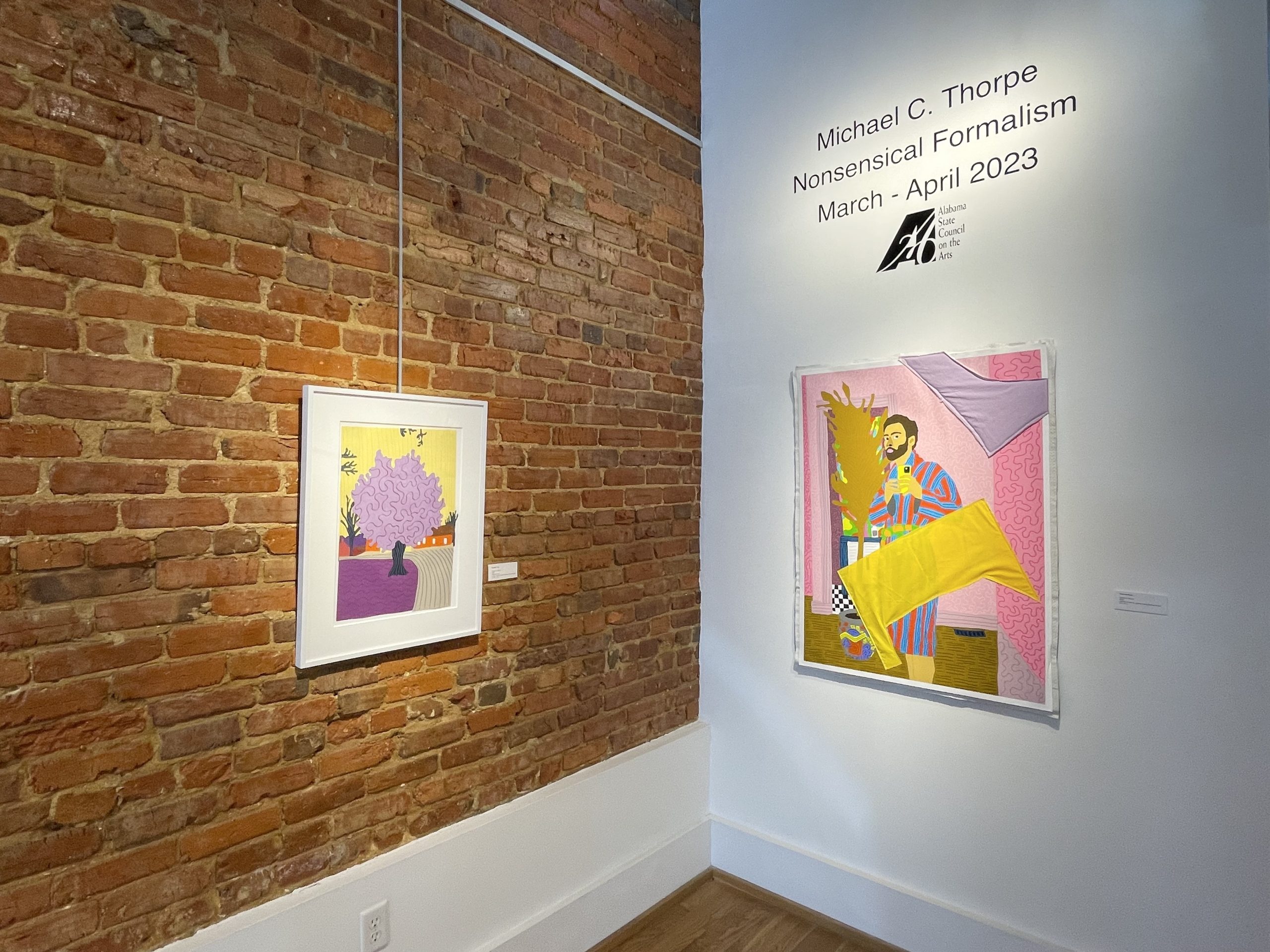How can perception speak into understanding joy, hope, and the issues we face today? This past spring a vibrant and thought-provoking exhibit opened at the Paul R. Jones gallery in downtown Tuscaloosa. Nonsensical Formalism, by Michael C. Thorpe, offered viewers of a warm and accepting visual narrative on his own perception of people and life, asking them to see the world through a different lens.
Thorpe used mediums and colors that both played with and were comforting to my eyes. Bold primary colors were integrated in every piece, reminding me of children’s books. The mediums, which included quilting and overlayed colored paper, gave me a similar sensation reminiscent of childhood. I was reminded of memories like sitting on my grandmother’s quilt to creating art for my mom in kindergarten. Taking me to these memories was effective in causing me to feel an immediate and comfortable connection with Thorpe’s work. By creating an environment familiar to the audience, Thorpe’s artwork naturally brought the viewer into his perspective on life.

Thorpe’s narrative on perspective ran throughout the exhibit as he presented different scenes from life. There was a piece featuring a playground, another a city scene, and another a baseball player, along with many more. While they all shared a coherent aesthetic, using similar colors and detailing, each maintained its individuality. Because of each piece’s individual essence, together they built on top of the prior, forming an entire view of Thorpe’s perception of our world.
Two portraits in the exhibit exemplify how each piece added to Thorpe’s perspective. In these two portraits, “Latoya”and “Cozy Tio,” the subjects were individual in medium, size, and colors, yet shared a similar form making them obviously both part of Thorpe’s narrative. They were placed facing each other from across the room, conversing with themselves while also forcing the audience to engage in the conversation.

In “Latoya” a stunning Black woman in a long yellow dress was elegantly stitched into a quilt. The piece was incredible, hanging off the wall at over seven feet tall, enveloping the viewer. Her grace and stature gave insight into how Thorpe perceived this woman. Perhaps she was an important woman in this narrative, or perhaps her presence, which drew attention from other pieces was Thorpe’s main intention. Whatever Thorpe’s motives were, the result was both stunning and powerful. Being that “Latoya”was a quilt, the medium also interacted with the narrative of perception. It made me wonder how we perceive some women as comfortable, safe, and warm, like this quilt, while others we see as strong, beautiful, and influential like the woman in “Latoya.” The very placement of the woman’s view, a side glance and smile toward the viewer, seemed to say, “can a woman not be both?” In “Latoya”many aspects of womanhood and Blackness seemed to be considered as Thorpe gave us a glance into his perception of both.
On the other side of the room hung “Cozy Tio.”This piece featured a portrait of a white man with long brown hair covered by a beanie and wearing a beige sweater. It was a smaller work, just over a foot in height. The size of the piece caused me to believe this man was not as influential in Thorpe’s life. This difference was strengthened through the mediums that Thorpe used to present this man. He overlayed cardstock creating a blocky, two-dimensional appearance that still had depth. To add to this presentation, Thorpe gave details using markers to each piece of paper. The cardstock and markers gave the man a vague, simpler, presentation. The piece lacked much of the color and imaginative essence that “Latoya” and others had which caused me to consider what the piece might be saying on men in society. Was Thorpe pushing the viewer to think on assumptions about how men to perceive the world, as if without childlike imagination? To contradict this, Thorpe’s own work suggested to the viewer that a man’s perspective cannot only be one of playfulness and vibrancy but deep insight. “Latoya”and “Cozy Tio”were just two of the many pieces that demonstrated the interaction Thorpe had with his material and audience by giving insight into societal expectations and perception.

Unlike the title of this exhibit, Nonsensical Formalism, I witnessed a curated and detailed narrative that Michael C. Thorpe had created. The exhibit spoke to how perspective is important in engaging with this life. He gave each piece vibrancy only found in children’s books, meanwhile confronting social issues of gender and race that people often choose to avoid. Thorpe showed in this exhibit that as those who understand the societal issues, we are most able to see the hope, joy and wonder of this life as well.
Nonsensical Formalism by Michael C. Thorpe was exhibited at the Paul R. Jones Museum from March 3 to April 28, 2023. “Latoya,” 2019 – quilting cotton, batting 88 x 70.5 in; “Cozy Tio,” 2022 – crayons, marker, colored pencils, card stock, glue 18.75 x 11.5 in

